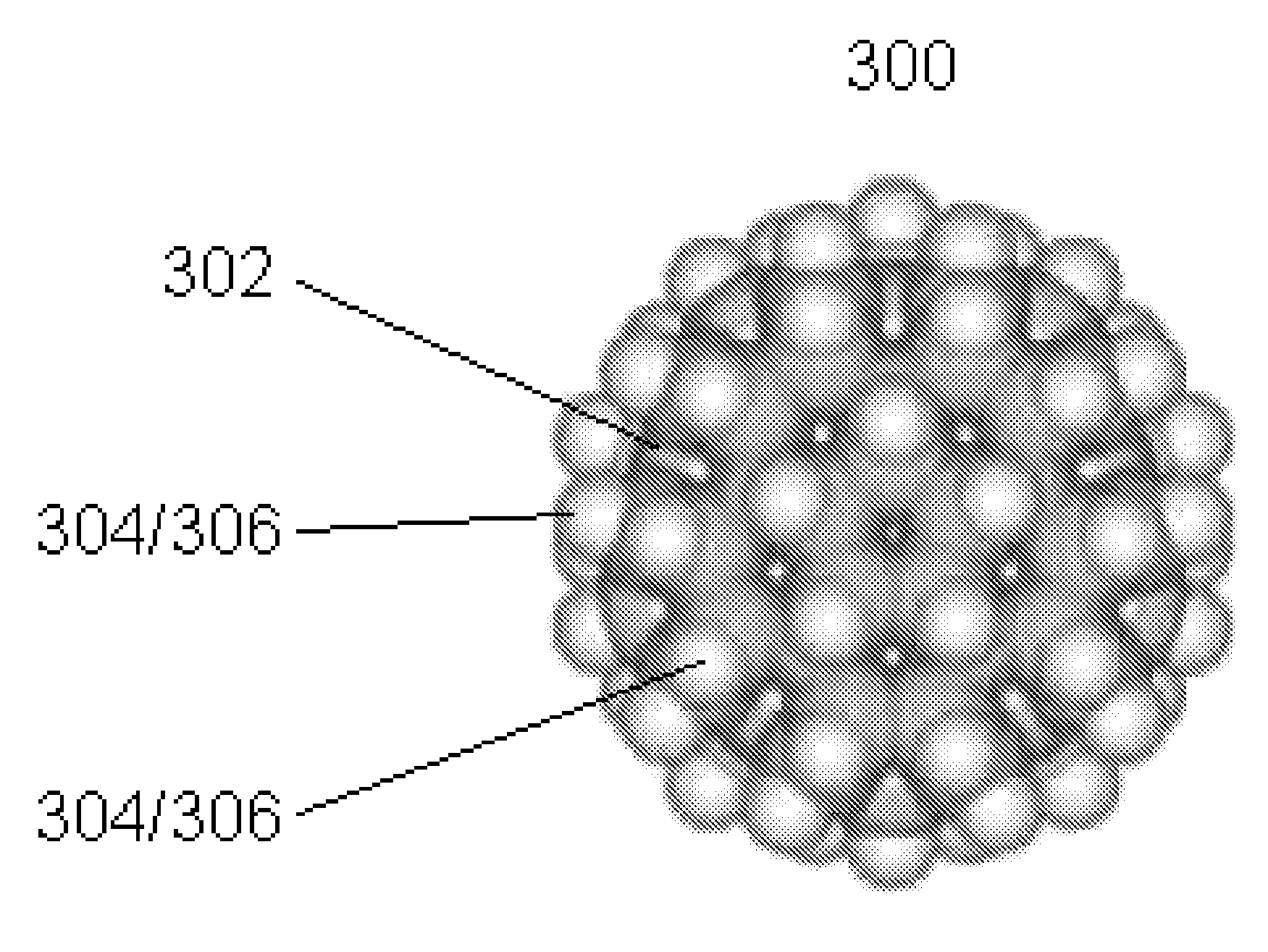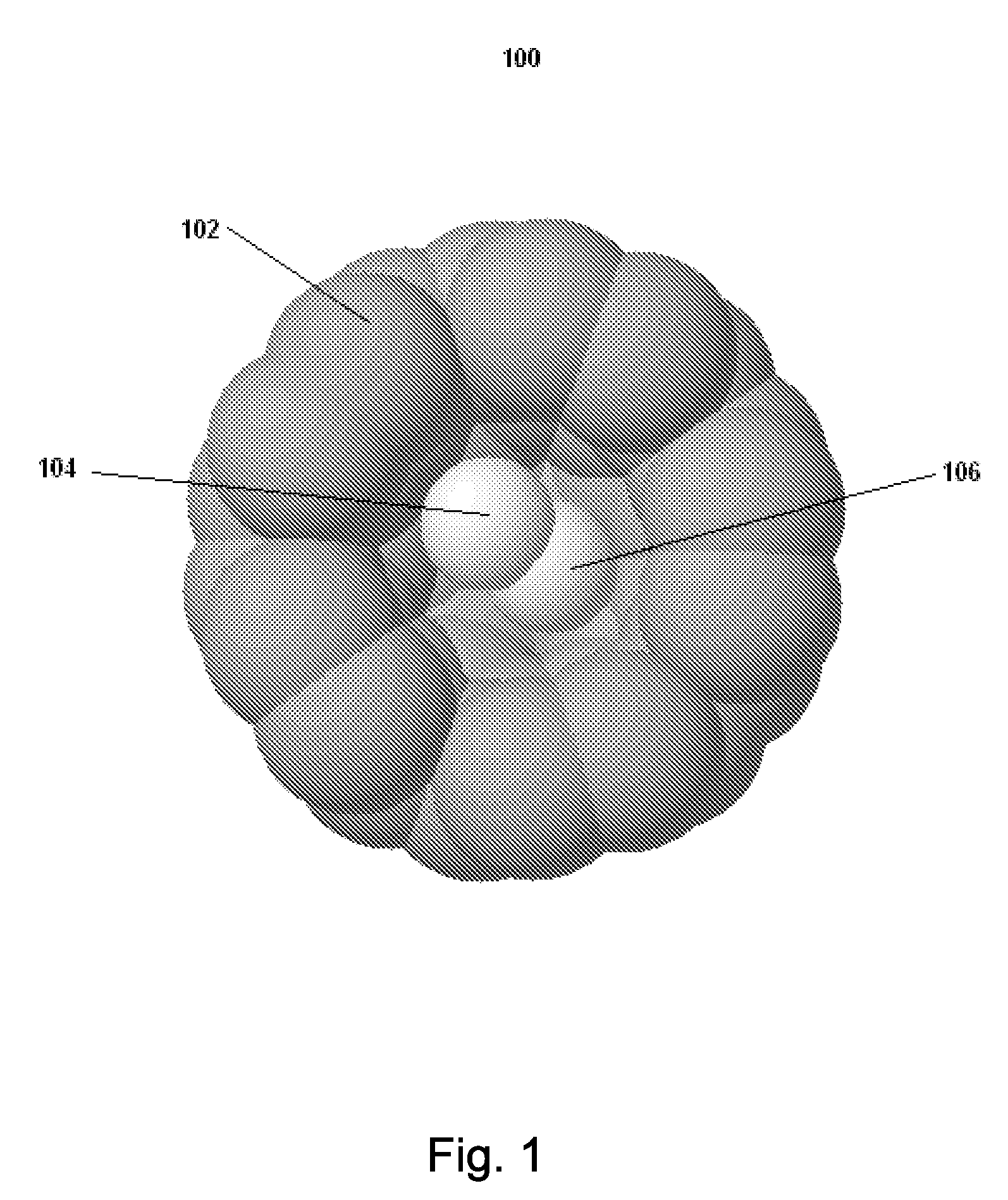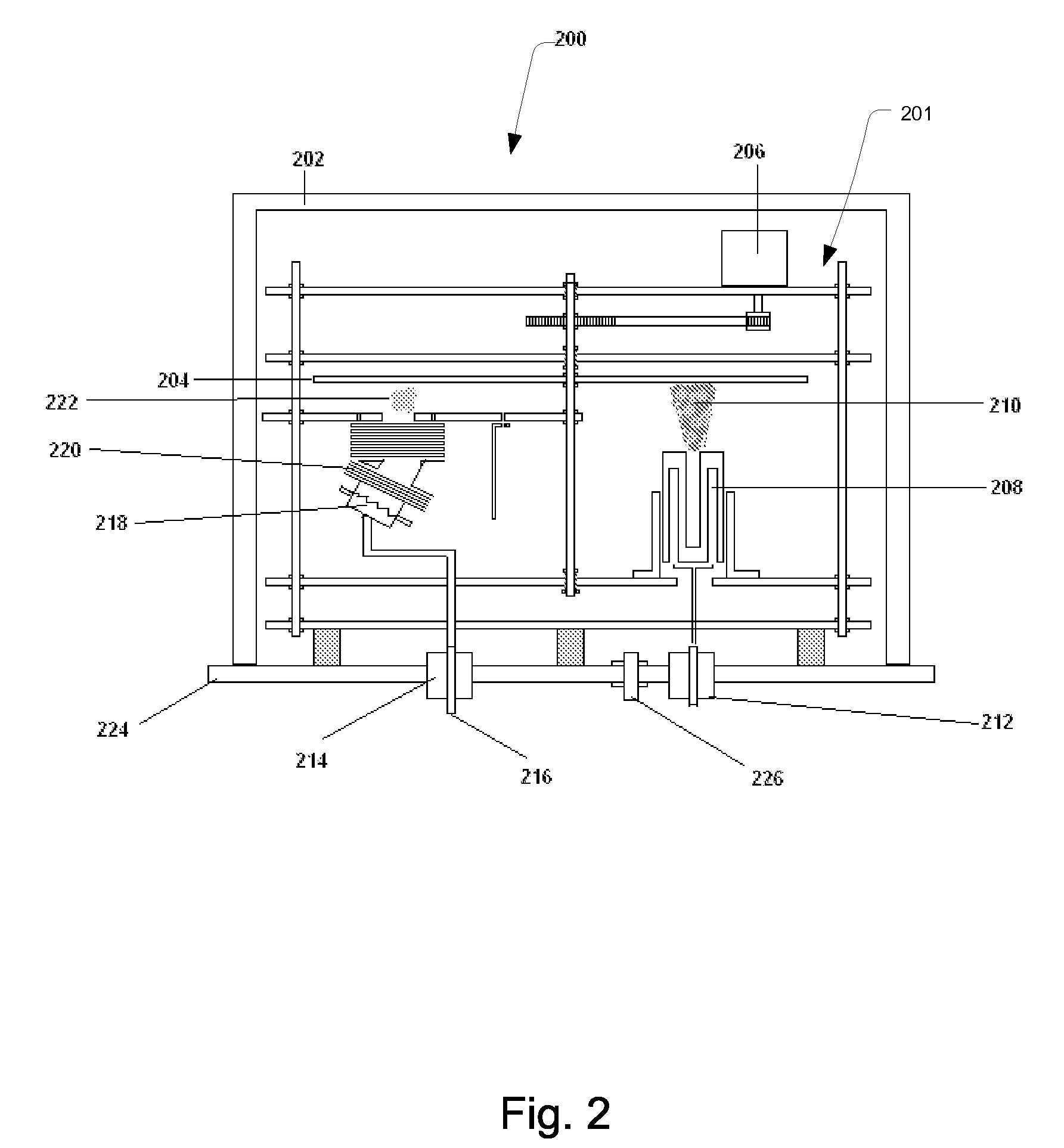Fusion fuel containers and system
a technology of fusion fuel and containers, applied in the field of fuels, can solve the problems of affecting the reaction, the need for even, simultaneous heating and uniform compression of light nuclei, and the need for uniform heating and compression
- Summary
- Abstract
- Description
- Claims
- Application Information
AI Technical Summary
Benefits of technology
Problems solved by technology
Method used
Image
Examples
example 1
100% D2@C60 in 8 Steps via the Komatsu Method (10 g C60 to 1 g D2@C60)
[0080]This 8 step method, first published by Komatsu, et al., involves three phases: 1) opening a “port” into the fullerene molecule, 2) injecting light molecules into the opened fullerene molecules, and then 3) closing the port to enclose the light molecules within the fullerenes. This 8 step method is described in more detail below as an exemplary procedure. It is to be understood that the temperatures, pressures, and quantities of reactants are approximate, and greater detail is provided in the publications referenced, all of which are incorporated by reference herein in their entirety.[0081]OPENING (Murata, et al., “Synthesis, Structure, and Properties of Novel Open-Cage Fullerenes Having Heteroatom(s) on the rim of the Orifice,” pp. 1600-1609, Chem. Eur. J., 2003, 9, No. 7.) [Overall Yield 40%]
[0082]Step 1: C60 to C60:8 Member Ring (Compound 5)
[0083]A mixture of fullerene C60 (50 mg, 0.069 mmol) and 3-(2-pyri...
example 2
[0100]D2@C60 and DT@C60 via Ion Injection: A system for ion beam implantation within a vacuum chamber as described above is used. A C60 fullerene (acquired from SES Research) is placed into a heater and heated to a temperature between 400-700° C. The evaporated fullerene attaches itself as a thin layer to a rotating disk or cylinder to be bombarded with light nuclei. The light nuclei, in this case D2 (acquired from Praxair), are introduced into the ion beam system at low pressure (e.g., about less than 10−2 torr) and then accelerated to ion energies of between 5-200 eV. The light nuclei are thereby injected into the fullerene cage-like molecule containers. This gives D2@C60 with total incorporation fractions of about 1×10−11 and greater (expressed as total number of moles of gas in sample).
[0101]DT@C60 may be acquired by two methods. Since tritium is a byproduct of neutron capture in a deuterium nuclei a method is to acquire tritium and blend the singular ions of D and T together to...
example 3
[0102]6LiD@C70 via Formation Encapsulation: A thin wire of 6LiD is procured. 6Li in this case means the number 6 isotope of lithium. The method is similar to the arc-vapor process for making fullerenes such as described in U.S. Pat. Nos. 5,227,038 and 5,275,705, which are incorporated herein by reference. This process is the consumption of composite graphite rods, which contain the light nuclei to be encapsulated, in an electrical arc in an inert atmosphere, such as helium or argon, and the simultaneous condensation of the resulting soot. Alternatively, fullerene-encapsulated light nuclei may be produced in sooting benzene flames, with the light nuclei vapor introduced into the flames, or by induction heating of composite rods with RF energy. An example of the benzene approach is disclosed in J. T. McKinnon, et al., “Combustion Synthesis of Fullerenes,” pp. 223-224, Combustion and Flame, Vol. 88, pp 102-112, 1992, which is incorporated herein for all purposes. The RF energy approach...
PUM
| Property | Measurement | Unit |
|---|---|---|
| diameter | aaaaa | aaaaa |
| outer diameter | aaaaa | aaaaa |
| outer diameter | aaaaa | aaaaa |
Abstract
Description
Claims
Application Information
 Login to View More
Login to View More - R&D
- Intellectual Property
- Life Sciences
- Materials
- Tech Scout
- Unparalleled Data Quality
- Higher Quality Content
- 60% Fewer Hallucinations
Browse by: Latest US Patents, China's latest patents, Technical Efficacy Thesaurus, Application Domain, Technology Topic, Popular Technical Reports.
© 2025 PatSnap. All rights reserved.Legal|Privacy policy|Modern Slavery Act Transparency Statement|Sitemap|About US| Contact US: help@patsnap.com



